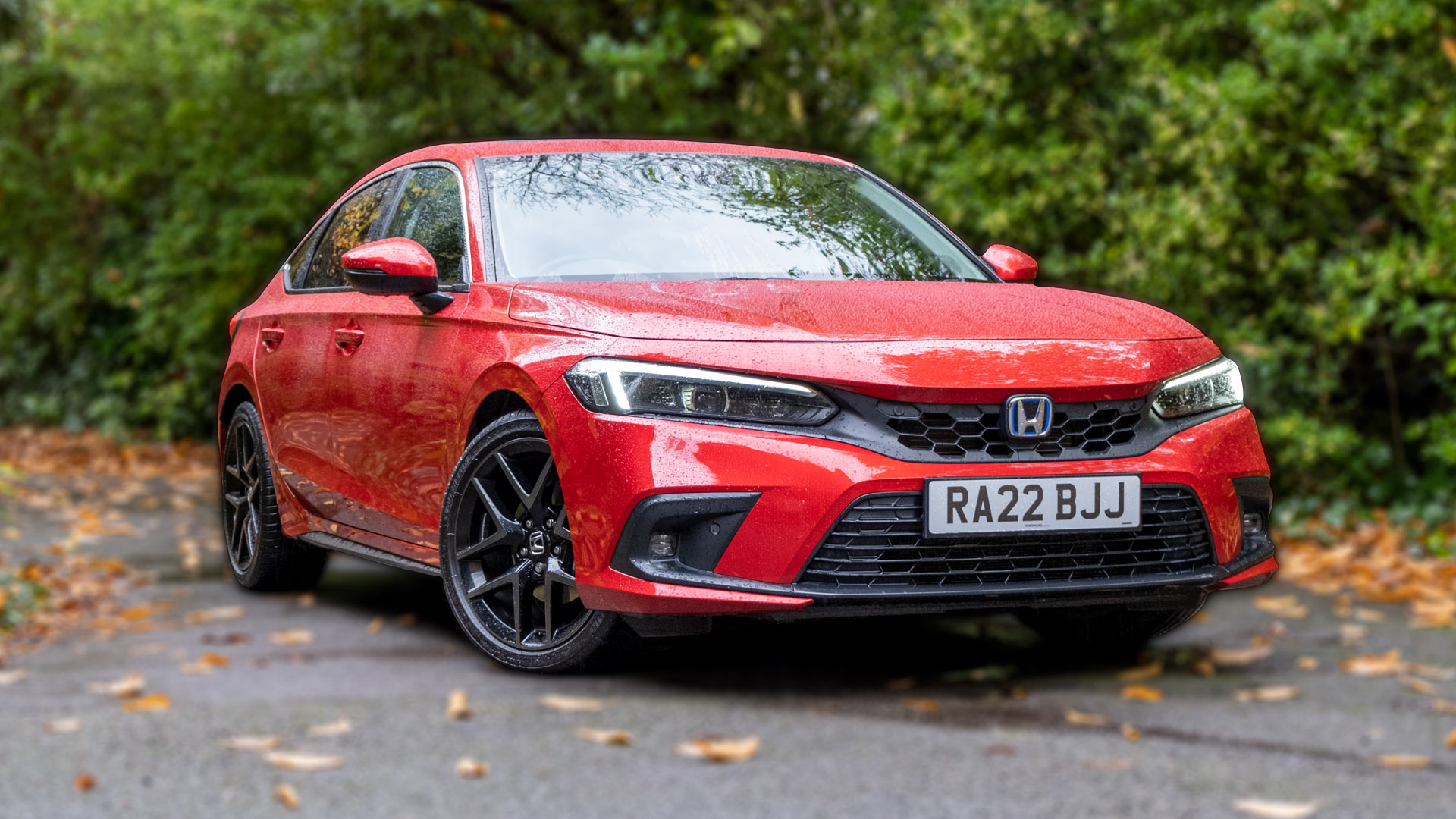The mere mention of it can make even the most passionate drivers groan. Whether it’s the soul-sapping crawl of rush hour in the city or the frustrating stop-start dance on a congested highway, traffic is the great equalizer — something we all have to face, no matter what we drive. But here’s the thing: not all cars handle traffic the same way.
Some glide through it with grace, comfort, and calm, turning the daily commute into a peaceful if not pleasant experience. Others? They make it feel worse, adding discomfort, stress, and frustration to an already tedious part of the day.
This difference can often boil down to how a vehicle is designed, both mechanically and ergonomically. Cars built for performance, adventure, or style often come with trade-offs that become glaring in low-speed, high-density driving conditions.
Tight suspensions, poor visibility, twitchy throttles, heavy clutches, or massive footprints may be tolerable on the open road — even thrilling — but put those same features into bumper-to-bumper traffic, and the charm wears off quickly.
You start to feel every jolt. Every shift becomes labor. Every red light tests your patience. The reality is that many vehicles simply aren’t built for the stop-and-go grind of daily urban life.
On the flip side, there are vehicles specifically engineered to handle this kind of punishment — and even make it bearable. With features like adaptive cruise control, seamless automatic transmissions, whisper-quiet electric powertrains, or smooth regenerative braking, these cars don’t just endure traffic — they rise to the occasion.
Thoughtful cabin design, intuitive infotainment, and comfortable seating can dramatically change how you experience time behind the wheel when the pace is a crawl.
These vehicles are the unsung heroes of modern commuting — not necessarily the flashiest or most powerful, but reliable partners in the daily battle with congestion.
In this article, we’ll take a deep dive into five cars that make traffic less of a burden and five that make it feel worse than it already is.
We’re not judging these cars on how fast they go, how well they corner, or how much street cred they carry. Instead, we’re looking at how they perform in one of the most common — and grueling — driving environments: everyday traffic.
We’ll explore what makes some of them quietly brilliant in this setting, and why others, despite their appeal elsewhere, become burdensome in the slow lane.
Whether you’re shopping for a new commuter car or just curious to see if your daily driver made the list, this breakdown will offer insight into which cars truly shine when the going gets slow — and which ones will have you white-knuckling the wheel by mile three.
Also Read: 10 Cars Where Rear Seatbelt Mounting Gets in the Way
5 Cars That Are a Joy to Drive in Traffic
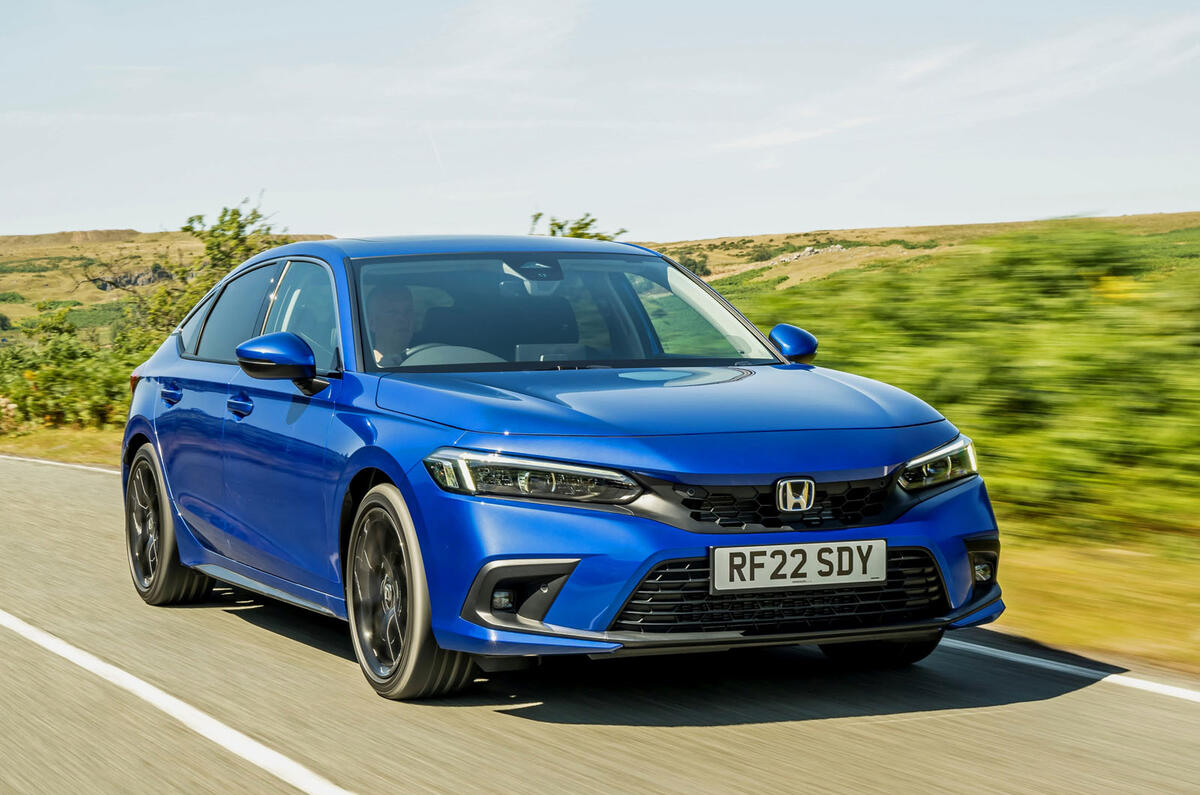
1. Honda Civic
The Honda Civic is one of those rare vehicles that balances accessibility with refinement, and this harmony becomes especially apparent when navigating the daily grind of traffic.
In bumper-to-bumper conditions, the Civic’s Continuously Variable Transmission (CVT) plays a pivotal role in delivering an experience that is not just tolerable, but genuinely smooth.
Unlike traditional automatic transmissions that often fumble between gears or hesitate when re-engaging power after a stop, the Civic’s CVT maintains a fluid and seamless delivery of power, which is crucial for easing the tension of constant stopping and starting.
The hybrid variants amplify this effect, offering electric torque at lower speeds and significantly improved fuel economy — an undeniable plus when you’re idling longer than you’re driving.
Interior comfort also adds to the Civic’s charm in dense traffic scenarios. The seats are remarkably supportive, with a design that feels far more sophisticated than what you’d expect in an affordable compact. Lumbar support, soft-touch materials, and thoughtful placement of controls make long periods behind the wheel far less taxing.
The infotainment interface, which supports Apple CarPlay and Android Auto, is logically arranged and distraction-free, allowing drivers to easily access music, navigation, or calls without becoming mentally overloaded.
Even the base sound system is tuned with enough richness to transform your Spotify queue into a traffic soundtrack that makes the delay feel a little less frustrating.
Visibility is another unsung advantage in the Civic. With a relatively upright seating position and slim A-pillars, drivers are granted a generous view of the road ahead and ample peripheral awareness, both of which are crucial when maneuvering in close quarters or navigating merging lanes.
Add in Honda’s solid driver-assist suite — adaptive cruise control, lane-keeping assist, and traffic sign recognition — and you have a commuter’s dream.
While the Civic might not boast luxury-brand prestige, in the trenches of real-world driving, it’s the kind of car that consistently punches above its weight and takes much of the edge off a daily traffic grind.
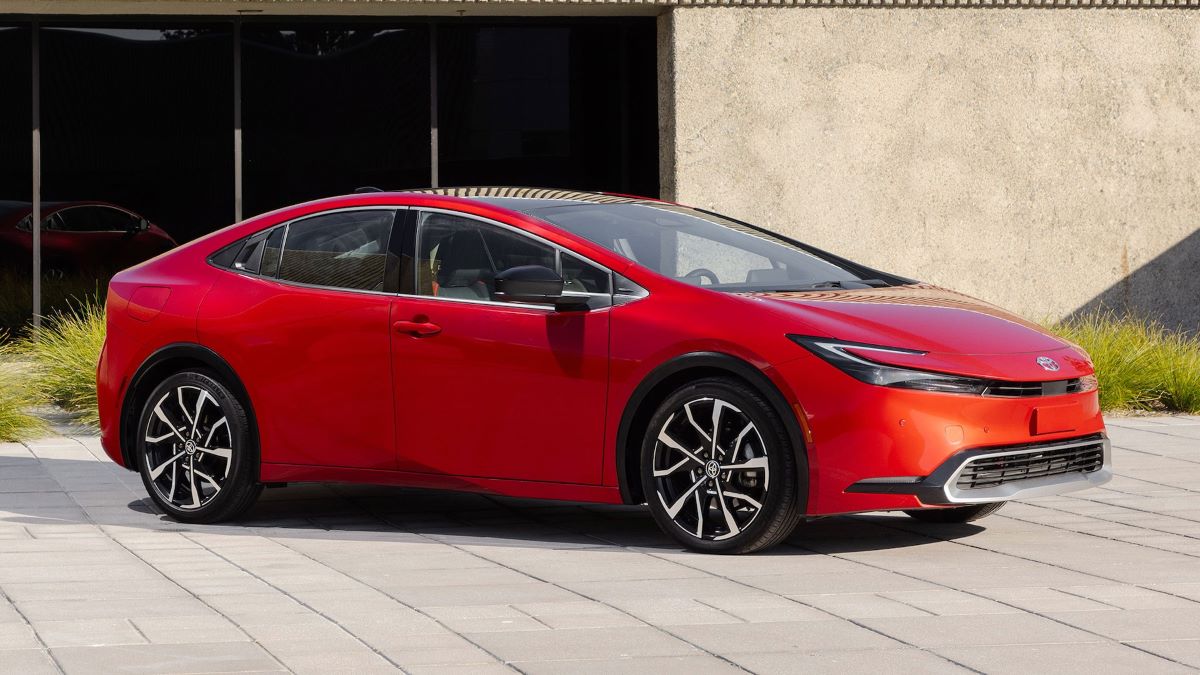
2. Toyota Prius
The Toyota Prius may not turn heads or quicken pulses, but when you’re stuck in the thick of a congested city center or creeping along a jammed freeway, it becomes clear that this car was designed for exactly these conditions.
Its hybrid powertrain transitions so smoothly between electric and gas power that it’s often imperceptible — something that significantly reduces the jarring interruptions typical in conventional drivetrains.
In slow-moving traffic, the electric motor handles much of the load, making the car eerily quiet, which can be an unexpected source of calm amid urban chaos. You hear less engine noise, experience fewer vibrations, and glide with a sort of mechanical serenity that is rare in internal combustion vehicles.
Toyota’s hybrid system also rewards patience by delivering astonishing fuel economy, particularly at low speeds. In traditional cars, heavy traffic is a gas-guzzler’s nightmare, but the Prius thrives on it.
The longer you coast or crawl, the more you realize how little fuel you’re burning — a psychological and economic win for commuters. Beyond the mechanical bits, the cabin is intuitively laid out and, while not overly luxurious, it exudes efficiency.
The dashboard presents information cleanly, and the infotainment system, while not flashy, is simple and highly functional.
The seats offer enough padding and bolstering for extended stints in traffic, and dual-zone climate control means passengers can stay comfortable without any fuss.
Where the Prius earns its keep is in its advanced driver-assistance technologies. Adaptive cruise control and lane-centering capabilities are tuned well for low-speed functionality, meaning the car can manage acceleration and braking duties with grace in slow conditions.
The effect is not only a physical reprieve — less footwork, less steering effort — but also a mental one. In a sea of red brake lights and honking horns, the Prius offers a cocoon of calm and efficiency.
It’s not glamorous, and it certainly won’t make you want to carve corners, but when the road turns into a parking lot, it’s hard to find a car better suited for the situation.

3. Tesla Model 3
In terms of transforming the mundane reality of traffic into something not just tolerable but almost futuristic, the Tesla Model 3 arguably leads the pack. From the moment you slide into its minimalist cabin, you’re greeted with a tech-forward atmosphere that sets the tone for a very different driving experience.
Everything from the whisper-quiet electric motor to the intuitive regenerative braking invites a different rhythm — one that suits stop-and-go traffic remarkably well. The Model 3’s one-pedal driving feature means that you rarely need to touch the brake pedal at all.
The moment you lift off the accelerator, the car smoothly decelerates, making city driving surprisingly fluid. This reduces foot fatigue and increases control, two benefits that are acutely appreciated when you’re inching along for extended periods.
Then there’s Autopilot — Tesla’s semi-autonomous driving system. While it’s not a full self-driving solution, its functionality in heavy traffic is impressive.
When engaged, it can steer, accelerate, and brake in response to the movement of cars around you, which greatly reduces the mental load associated with congested driving.
You no longer need to hyper-focus on every tiny brake light ahead of you, and the system’s precision helps avoid the jerky, stop-start sensation that’s so common in these conditions. Add in the Model 3’s ultra-responsive torque delivery, and when there is an opening, you can merge or switch lanes with confidence and immediacy.
Of course, the Model 3 isn’t just about tech and smooth power delivery. Its interior is an unexpectedly comfortable space to be in while waiting out delays.
The seats are well-contoured and supportive for long durations, the climate system works efficiently and quietly, and the enormous center touchscreen offers access to navigation, entertainment, and even in-car apps that can help pass the time when you’re at a full stop.
It’s a vehicle that feels like it was built for the modern commute — less a machine you operate, more a partner that understands how to take the edge off gridlock. If traffic is a constant in your life, the Model 3 turns it into something far closer to a controlled and comfortable experience.

4. Mazda CX-5
The Mazda CX-5 brings a level of sophistication and tactile satisfaction to daily driving that’s unusual in the compact SUV segment. It’s a crossover that feels more like a sporty sedan in terms of its handling and road feedback, which translates into a significant advantage in traffic conditions.
Where many SUVs feel lumbering and dull at low speeds, the CX-5 feels composed, sharp, and confidently planted. Its steering is responsive without being twitchy, and the suspension does an excellent job of absorbing bumps and imperfections without making the ride feel detached or floaty.
For the driver, this means less second-guessing during lane changes and more assured movement through tight spots — a rare treat when things are crawling along.
The powertrain deserves special praise as well. Whether you opt for the naturally aspirated engine or the turbocharged variant, the CX-5 delivers its power smoothly and linearly.
This is especially useful in urban traffic, where sudden surges or lags can be frustrating or even dangerous. The automatic transmission is well-tuned for everyday driving and shifts are virtually seamless, providing a sense of refined performance rather than utilitarian compromise.
Even the throttle response is just right — not overly sensitive, but immediate enough to make low-speed acceleration predictable and easy to modulate. These details matter more than most people realize when you’re behind the wheel for an hour and a half each morning and evening.
Inside, the Mazda CX-5 feels more like a premium offering than a budget-conscious choice. Materials are upscale, touchpoints are padded and thoughtfully arranged, and noise insulation is excellent. The seats are both supportive and soft enough to provide real comfort over extended periods.
Mazda’s infotainment system — while not the most visually dramatic — is logical, responsive, and easy to navigate with minimal distraction. All of this comes together to create a cabin that feels like a personal retreat from the madness outside.
When your day starts or ends with heavy traffic, the CX-5 helps take the edge off by giving you a space that feels calm, capable, and — surprisingly — even a little bit enjoyable.
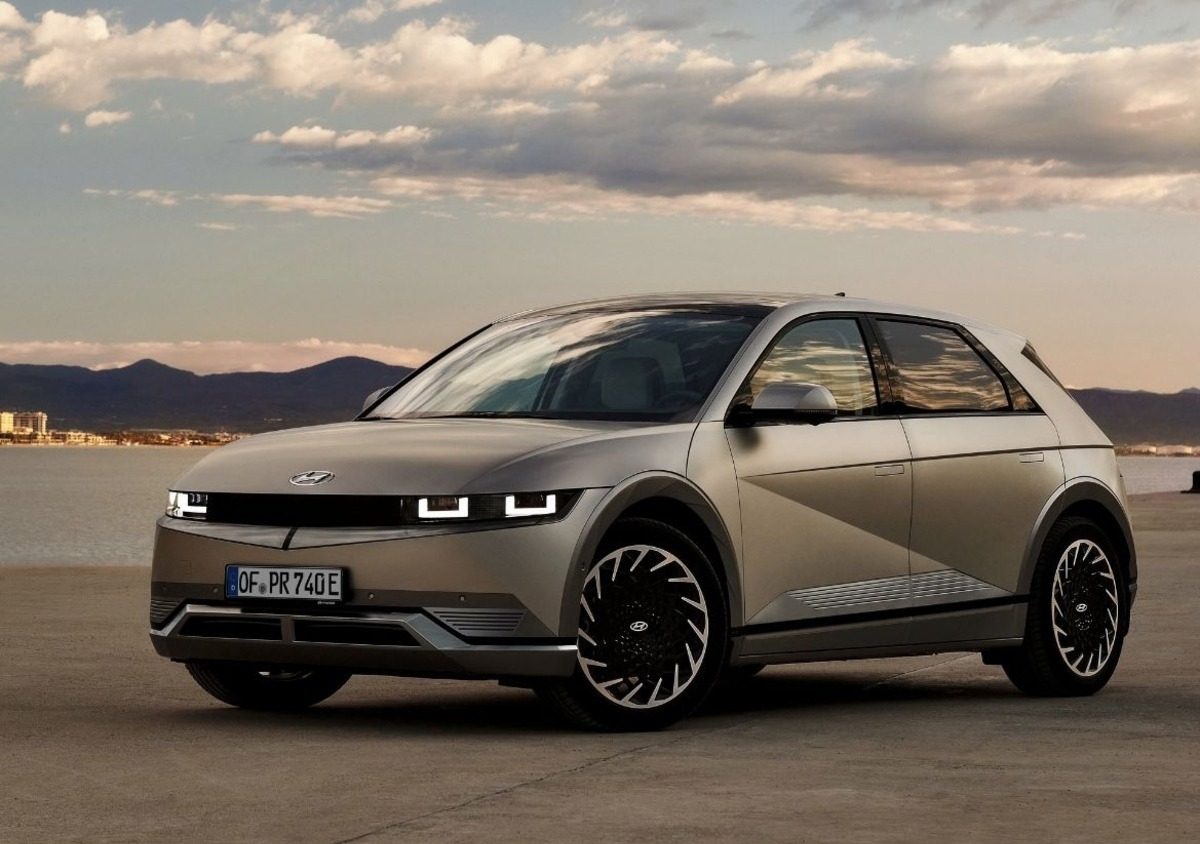
5. Hyundai Ioniq 5
The Hyundai Ioniq 5 is a game-changer in many ways, and its strengths are nowhere more evident than in traffic. As an all-electric compact SUV, the Ioniq 5 delivers the kind of whisper-silent operation and immediate torque that makes low-speed navigation feel effortless.
But beyond its electric advantages, what sets the Ioniq 5 apart is its holistic approach to comfort and driver experience. The interior is a revelation — roomy, airy, and flooded with natural light thanks to its expansive windows and panoramic roof.
In stop-and-go traffic, this open, minimalist design creates a psychological sense of space that makes the crawl less claustrophobic and more calming. It’s like being in a tech lounge that just happens to move.
From a performance standpoint, the Ioniq 5’s electric drivetrain is a godsend for traffic. The acceleration is smooth and instant, making those short bursts between lights or merging opportunities far more precise and satisfying.
More importantly, its regenerative braking system is adjustable, allowing drivers to fine-tune how aggressively the car slows when lifting off the accelerator.
Once accustomed to it, you’ll find yourself rarely using the brake pedal — a significant advantage in fatigue reduction.
The steering is also light and precise, allowing for quick maneuvers without the resistance or awkward feedback common in larger SUVs. Despite its size, it feels nimble in tight spaces and easy to slot into narrow lanes.
Tech features in the Ioniq 5 are top-tier and engineered with urban drivers in mind. The infotainment system is lightning-fast and integrates seamlessly with your phone, while advanced driver-assist features like stop-and-go adaptive cruise control, lane following assist, and automatic emergency braking provide a level of confidence and relaxation that’s rare in any segment.
The seats offer lounge-like comfort, and higher trims even include reclining rear seats with footrests — perfect if you’re waiting out an extended traffic jam.
It’s hard to overstate just how much Hyundai has thought about the driver’s emotional and physical experience in traffic. The Ioniq 5 doesn’t just manage the commute; it transforms it.
5 Cars That Are Exhausting to Drive in Traffic

1. Jeep Wrangler
There’s no denying the Jeep Wrangler’s legendary off-road prowess. It’s a symbol of adventure, rugged individualism, and mechanical durability — but once you take it off the trail and put it into downtown gridlock, that charm starts to unravel quickly. Driving a Wrangler in heavy traffic can feel more like a workout than a commute.
The steering is vague and requires constant correction, especially in the higher trims like the Rubicon, which are built with articulation and rock crawling in mind rather than smooth on-road behavior.
At lower speeds, that same heavy-duty suspension that allows for incredible off-road maneuverability translates to an unrefined, jittery ride that transmits every pothole and bump directly into the cabin.
In an environment where finesse matters more than force, the Wrangler feels like a blunt instrument in a world that needs a scalpel.
Visibility also becomes a real issue in city traffic, and while you might sit high above most cars, the narrow windshield, thick pillars, and upright design give you more tunnel vision than a commanding view. Parking becomes a series of small, stressful corrections.
Mirrors only help so much, and with limited rear visibility, you often feel like you’re guessing whether that tiny compact car is in your blind spot or not.
If you’re piloting a two-door model, the shorter wheelbase might help with tighter turns, but it still suffers from the same top-heavy feel that can make quick maneuvers uncomfortable. The four-door Unlimited versions fare better in space but worse in terms of handling and turning radius.
Then there’s the cabin experience, which is as utilitarian as it gets. In slow-moving traffic, especially in hot or cold weather, the lack of plush materials, underwhelming noise insulation, and occasionally clunky HVAC controls wear on you faster than you’d expect.
The ride is noisy — road noise, wind noise, and tire hum seem amplified in the Wrangler — and on a commute where you’re barely hitting 10 mph, every rattle becomes noticeable.
The Wrangler is a fantastic machine when used as intended: climbing over rocks or powering through muddy trails. But in traffic? It’s like wearing hiking boots to a black-tie dinner — technically functional, but clearly out of its element.
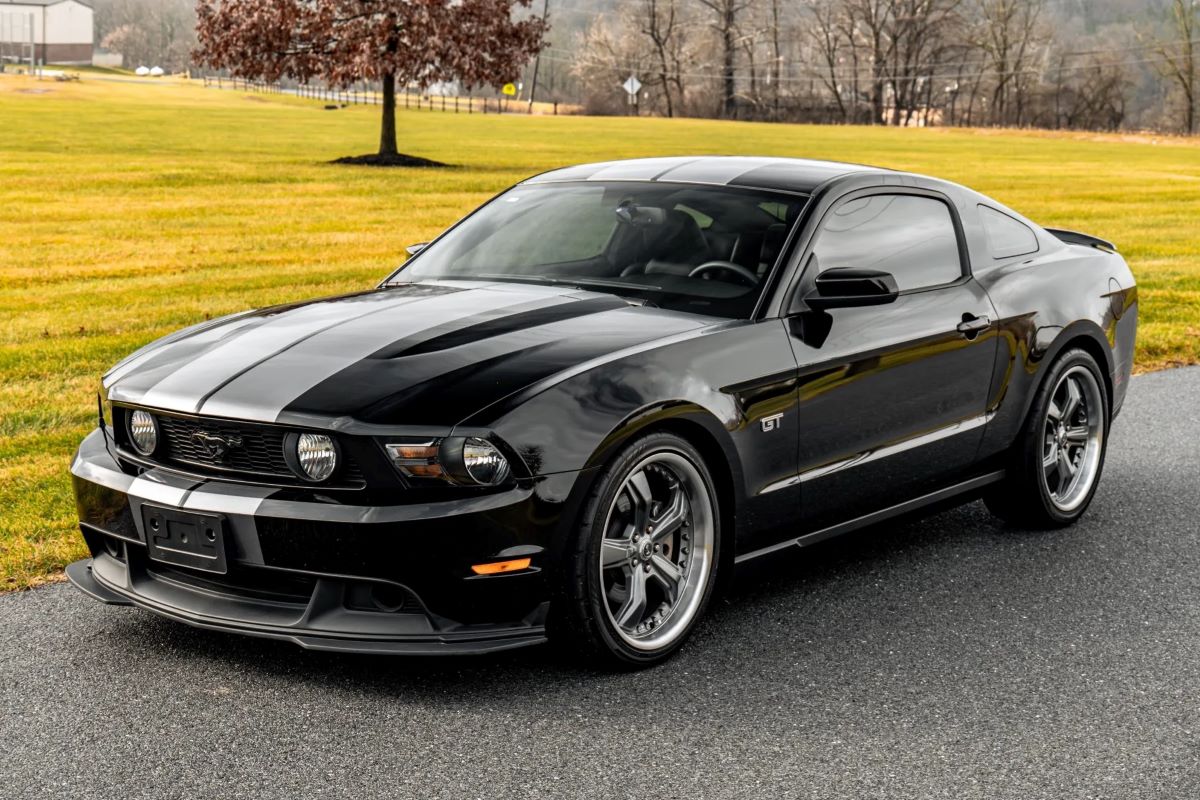
2. Ford Mustang GT (Manual Transmission)
The Ford Mustang GT — particularly when equipped with a manual transmission — is thrilling when conditions are right. Open roads, twisting backroads, or wide highways let this American muscle car shine with raw power, aggressive acceleration, and that unmistakable V8 growl.
But the moment you bring it into stop-and-go traffic, the very characteristics that make it exciting turn into liabilities. First and foremost, the clutch and gearbox are built for performance, not comfort. The clutch pedal is heavier than most daily drivers, requiring considerable pressure for each engagement.
This quickly becomes a literal pain during extended traffic sessions, especially if you’re caught in a particularly unforgiving rush hour crawl. By the time you get home, your left leg feels like it’s been through a gym session.
Throttle sensitivity is another issue. The GT’s powerful engine doesn’t exactly like subtlety. A light tap can result in a sharp surge forward, making smooth driving more of a chore than it should be. This forces the driver to maintain hyper-focus on pedal pressure, which is mentally draining in a situation where small movements matter most.
Combine that with a notchy shifter — rewarding when you’re racing, but annoying when you’re trying to shift between first and second a hundred times a day — and you start to feel like you’re constantly fighting the machine instead of flowing with it.
Even the steering, tuned for responsiveness and sharp handling, feels twitchy in low-speed environments, making delicate maneuvers more stressful than they ought to be.
Then there’s the visibility. The Mustang’s aggressive design comes with a low-slung roofline, a long hood, and small rear windows, all of which combine to create massive blind spots. Parallel parking or navigating tight lanes in city traffic becomes a guessing game, which only adds to the frustration.
The interior is stylish but doesn’t offer much in the way of comfort in traffic-heavy situations. The bolstered seats are great for spirited driving but can become overly rigid during prolonged commutes.
Even the exhaust, as delightful as it sounds on an open stretch, can become grating when all you’re doing is inching forward. In the end, the Mustang GT manual is a dream on the track and a nightmare in the bottleneck.

3. RAM 1500
The RAM 1500 is a beast of a truck — powerful, spacious, and capable of tackling serious workloads. In its base or more road-oriented trims, it can even be surprisingly civilized.
But once you step into the lifted, off-road-ready variants — think Rebel, TRX, or custom-lifted models — you’re no longer in the realm of practicality. In traffic, these behemoths are simply exhausting to manage.
First, let’s talk about size: the RAM 1500 is already one of the biggest vehicles on the road, and when it’s lifted or equipped with oversized tires, navigating through narrow city streets and tight parking garages becomes a nerve-wracking experience.
Merging, switching lanes, or even making turns in heavy traffic requires extra attention and physical effort, and every maneuver feels like threading a needle with a baseball bat.
The elevated ride height, while great for visibility in theory, actually works against you in urban driving. You can’t see low obstacles or curbs easily, and many smaller cars disappear completely in the side mirrors.
These trucks often feature stiffer suspensions for off-road travel, which means every bump, manhole, or road imperfection is communicated directly to your spine.
Low-speed ride quality suffers significantly, making traffic feel even more uncomfortable than it already is. Add to that the massive turning radius, and you start to understand why maneuvering in a crowded downtown area feels like a military operation. Every three-point turn becomes a five-point frustration.
Inside, the RAM can be luxurious — especially in the upper trims — but luxury does not always equate to relaxation. The cab is enormous, and while that can feel premium, it also adds to the disconnect between driver and environment.
You’re constantly aware of the vehicle’s bulk, and this hyperawareness becomes exhausting. Fuel economy also nosedives in traffic conditions, especially for V8 or supercharged trims.
Watching the fuel gauge drop as you crawl through congestion adds financial stress to physical discomfort. And forget about tight parking spots — unless you have a wide, empty lot to land this thing, you’re likely circling the block multiple times.
It’s a truck that excels in utility and off-road power but is fundamentally at odds with the slow, repetitive nature of daily traffic.
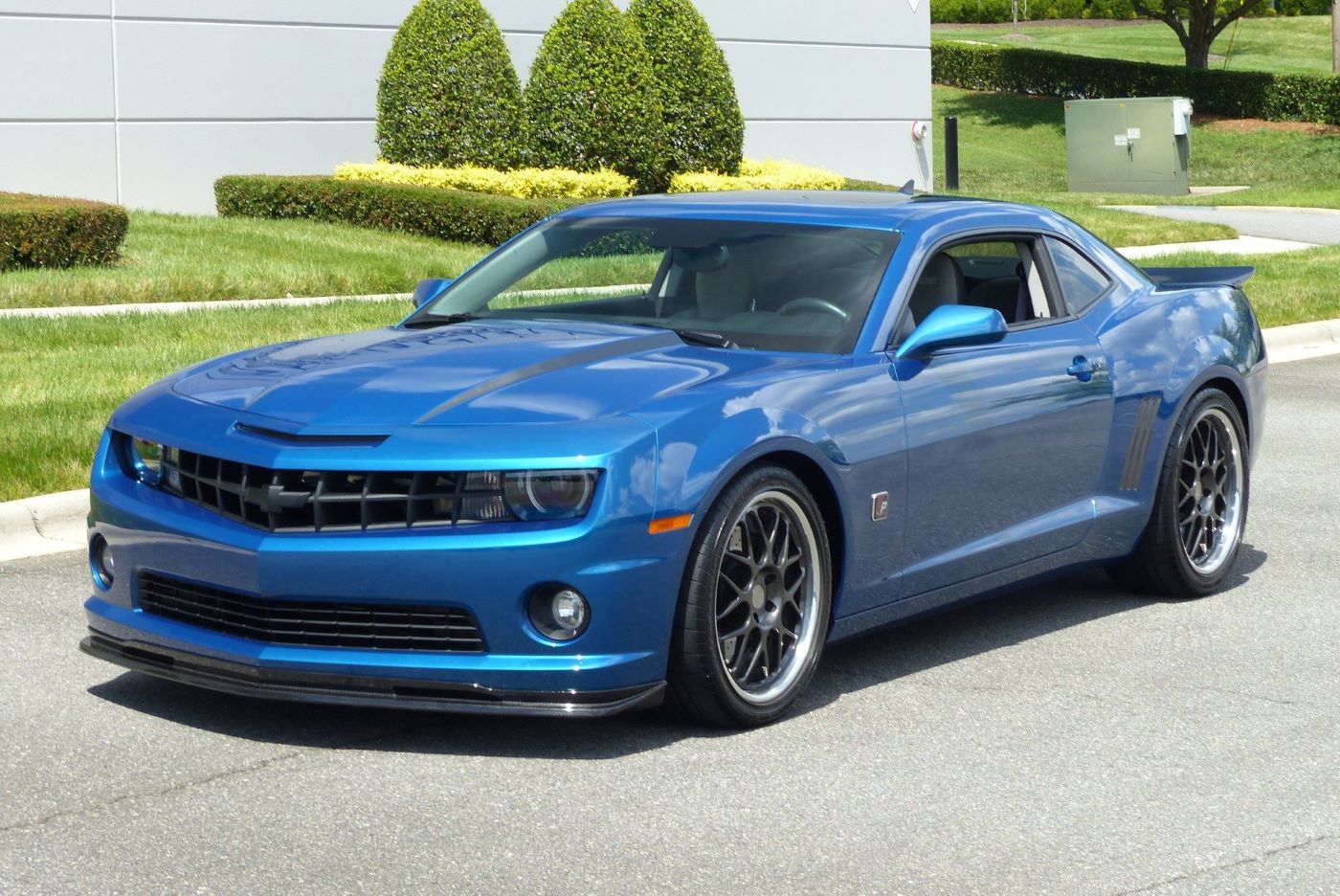
4. Chevrolet Camaro
On paper, the Chevrolet Camaro promises an exhilarating driving experience. Its sculpted design, sharp handling, and powerful engine lineup make it a head-turner and a joy on the open road. But in traffic, all those performance-oriented features start to feel like burdens.
The Camaro’s notoriously poor visibility is the first major strike against it in an urban environment. With its high beltline, low roof, and tiny rear windows, it creates massive blind spots.
Checking your surroundings while merging or lane-switching becomes an act of faith, and that’s not something you want when cars are stacked on all sides and inches count. Every move in traffic becomes slower, more cautious, and ultimately more frustrating.
Compounding the problem is the Camaro’s cabin design, which prioritizes style and a “cockpit feel” over practicality.
The seating position is low — very low — and while that might feel sporty in theory, in traffic it turns into a physical strain. You’re looking up at other drivers, your sightlines are limited, and the deep-set dashboard makes even small forward visibility awkward.
The layout can feel cramped, especially in the rear, and there’s a distinct claustrophobic vibe when you’re stuck inside it for extended periods with nowhere to go.
Even climate controls and infotainment menus feel like they require too much attention, which is mentally exhausting when you’re already navigating a stressful driving environment.
The mechanical aspects of the Camaro don’t help matters either. While the engine is responsive and satisfying under throttle, it’s overkill for low-speed operation. The transmission, particularly in performance trims, can be overly eager or harsh in first and second gears, making smooth progress a chore.
Combine this with a stiff suspension that seems tuned for track days rather than urban potholes, and you’ve got a car that’s uncomfortable, twitchy, and perpetually out of its element. It’s the kind of vehicle that makes you daydream about highway freedom — not because it’s so fun to drive, but because it feels like it was never designed to sit still.
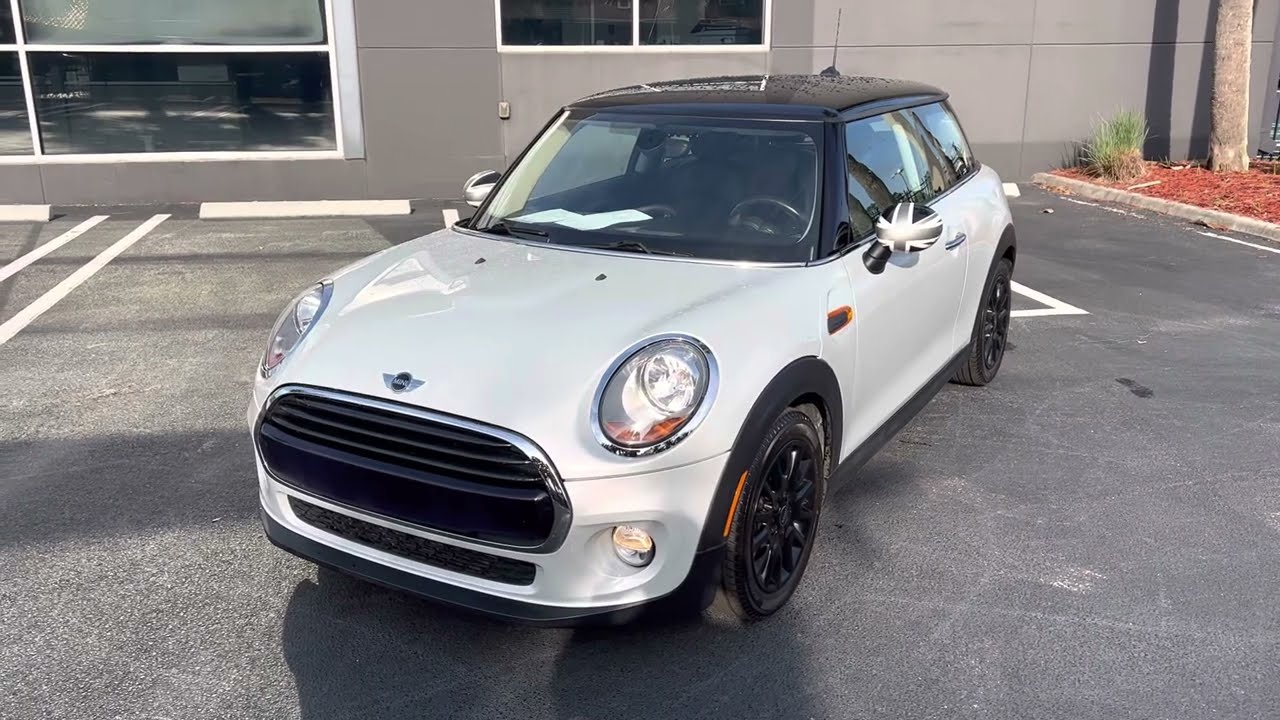
5. Mini Cooper
The Mini Cooper is a deceiving car. From the outside, it appears compact, agile, and ideally suited to the demands of city life.
And in some ways, that’s true — its small size and tight turning radius make it a breeze to park and thread through narrow streets. But in traffic, especially when equipped with a manual transmission, the Mini becomes unexpectedly tedious to drive.
The clutch is finicky, with a high engagement point that requires consistent precision. This might be fine for a spirited weekend drive through the countryside, but in bumper-to-bumper traffic, it becomes physically draining and mentally taxing.
You’re constantly working the pedals, navigating awkward starts, and trying to avoid lurching — a stressful routine that repeats hundreds of times per commute.
The throttle response is similarly twitchy. In its effort to feel sporty, the Mini delivers power quickly, which can be frustrating when trying to make small, incremental movements in slow-moving conditions.
It makes smooth low-speed driving more difficult than it should be, and that quick-reacting throttle, paired with an eager manual gearbox, means you’re always on edge — not relaxed.
The suspension, tuned for a more dynamic experience, is also stiff, which becomes painfully noticeable when crawling over uneven pavement or rough city roads. Instead of gliding through traffic, you feel every bump and dip, which quickly wears down your patience and comfort.
Inside, the Mini Cooper’s interior, while quirky and charming, isn’t especially soothing in a traffic jam. The design is busier than it needs to be, with toggle switches and circular motifs that add personality but also visual clutter.
Noise insulation is minimal, so the hum of traffic, honking horns, and surrounding engine noise becomes your soundtrack — not ideal when you’re already stressed.
There’s a lot to love about the Mini Cooper in the right setting, but daily rush hour traffic isn’t one of them. It’s a car that demands attention and energy at every moment, and that’s the last thing you want when you’re crawling through congestion and counting the minutes until you’re home.
Traffic is one of those inescapable realities of modern life. Whether you live in a bustling metropolis or a rapidly growing suburb, chances are good that at some point in your day, you’re going to end up bumper-to-bumper with hundreds of other frustrated drivers.
And in those moments, your vehicle’s true personality is revealed. It’s no longer about horsepower, track times, or aggressive styling — it’s about comfort, ease of use, and how much energy your car either drains or conserves while idling at the light for the fifth time in two miles.
The difference between a relaxing drive and a nerve-fraying commute often has less to do with the road itself and more to do with the machine you’re driving on it.
The vehicles that excel in traffic are the ones that think ahead, designed not just for thrills, but for real-world usability. Cars like the Honda Civic, Toyota Prius, and Tesla Model 3 prioritize ease of operation, smooth power delivery, and intelligent features that remove friction from the driving experience.
They are the silent warriors of the urban commute — reliable, efficient, and engineered with the driver’s mental state in mind. They don’t necessarily inspire envy or make bold statements, but they get you home without raising your blood pressure — and that’s a kind of luxury in itself.
On the other hand, some vehicles are built for excitement, ruggedness, or outright style, and they often sacrifice the small details that make traffic tolerable.
The Jeep Wrangler, Ford Mustang GT, and Chevrolet Camaro are undeniably fun under the right conditions, but traffic is not where they shine. Their stiff rides, clunky transmissions, poor visibility, or oversized dimensions turn everyday commuting into a chore.
It’s not that these are bad vehicles — far from it — but they are simply out of sync with the demands of urban driving. In traffic, every design flaw feels exaggerated, every shortcoming magnified. And when the drive becomes more taxing than the destination, it’s hard not to question your automotive choices.
Ultimately, choosing a car is more than just picking something that looks good or performs well on paper. It’s about knowing your needs, your habits, and the environments you’ll be driving in most often. If traffic is a part of your routine — as it is for most drivers — then prioritizing comfort, efficiency, and ease of use isn’t just smart, it’s essential.
The best car for you might not be the most exciting, but if it makes your daily grind even a little easier, it can transform the worst part of your day into something you barely notice. And in today’s world, that’s worth its weight in gold.

